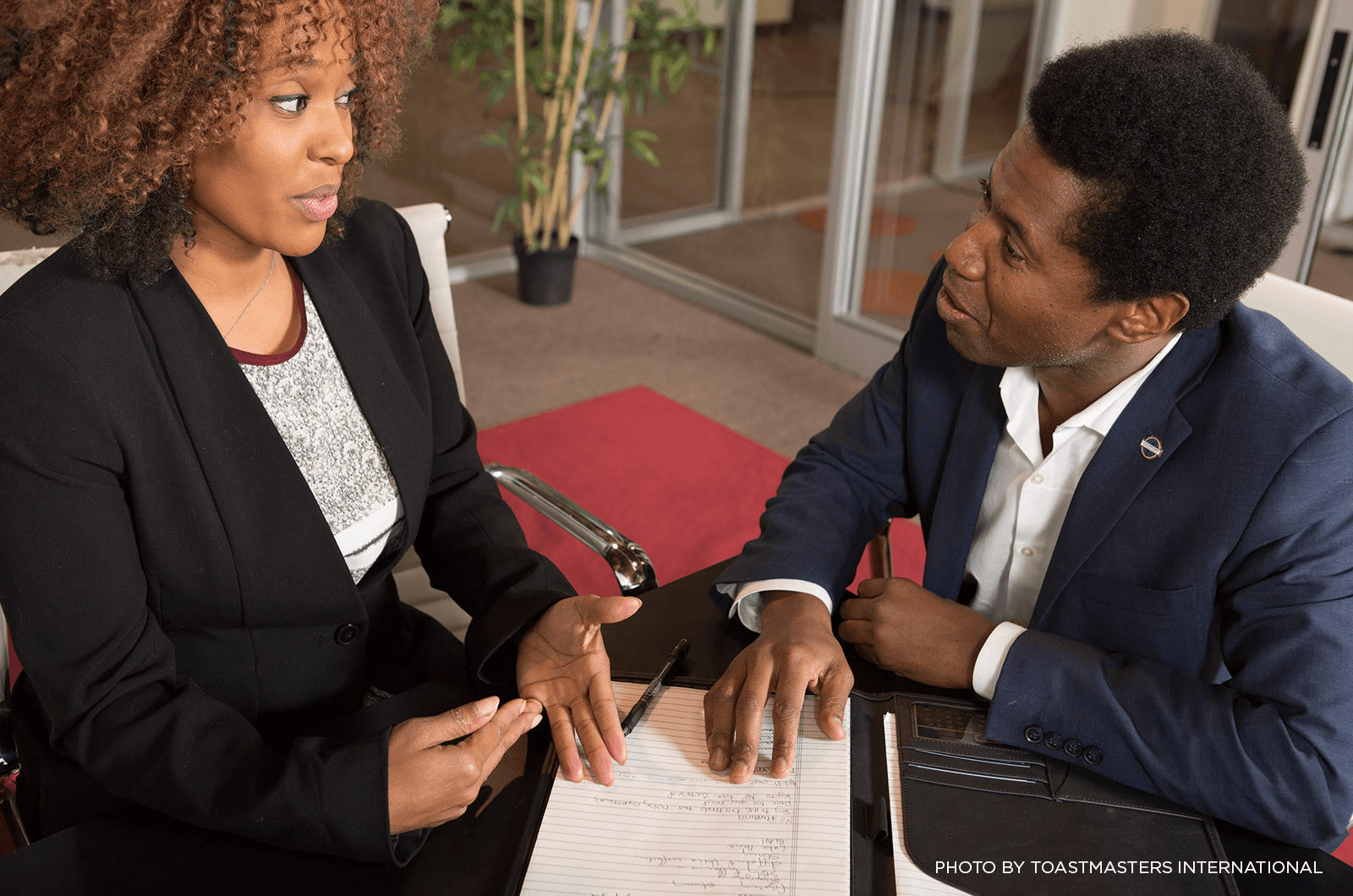
In the vast sea of resources available on becoming a stronger public speaker, one powerful influence rarely discussed is the support of a friend, colleague or fellow Toastmaster. Taking a cue from your parents and simply showing up with a smile and a “go you!” face is a good start, but there are more specific ways—before, during and after the speech—to elevate your support. Here are three supporting tactics that make a difference.
Before the Speech: What’s the Point?
When your friend or colleague practices in front of you, you could say “Great job,” but what does that really mean, and how does it help? The answer to both questions: very little.
Confidence doesn’t come from platitudes as much as the internal knowledge that you’re succeeding in your mission. You can help your friend or colleague build that confidence by acknowledging the point he was trying to make:
SPEAKER: “What do you think my point was?”
LISTENER: “That podcasting is a growing and influential platform for sharing ideas?”
Speaker: “Exactly!”
Compare this to the impact of:
SPEAKER: “How was I?”
LISTENER: “Great!”
SPEAKER: “Thanks!”
During the Speech: Nod ‘Yes’
Merely smiling says, “I’m enjoying this.” But the speaker’s intention is not to entertain you; it’s to successfully make a point. So the stronger and more supportive reaction is to nod (note: not nod off).
Nodding says, “I’m receiving and understanding your point, and it has meaning for me.” Whether the speaker realizes it or not, she will see your nodding as a confirmation of success, not simply a signal of support.
Nodding is also the best way to support a speaker struggling to maintain confidence or stay on track. It says, “You are succeeding, whether or not you think so. Be strong and carry on.”
I know this from personal experience. Early in my public speaking journey, seeing heads nodding in my audience was a huge factor in helping me maintain my mettle.
Other nonverbal signs that show support:
- Arrive on time.
- Be “present,” which means not checking your phone, working on your laptop or otherwise being distracted as the speaker is talking.
- Sit close to the front. If the speaker can’t see you, your support has no impact.
- Lean forward, not back. This says, “I’m engaged and ready to receive your point.”
- Shush anyone talking loudly during the speech. Don’t scold them; just say, “I’m having trouble listening.”
- Be the first to applaud when the speaker finishes.
- Pay attention to other speakers in the program. Your friend or colleague wants you to respect the entire event, not just his portion of it, because he is contributing to the overall success of the event.
After the Speech: Double Down on the Accomplishment
After she’s finished, the speaker will want to know if she was successful. Saying “awesome!” or “nailed it!” alone will not reflect that.
After the CEO I support speaks, he typically emails me immediately for my reaction (even as the event continues). My job is not just to send him the text version of an emoji; it’s to indicate whether or not he successfully delivered his point.
“My job is not just to send him the text version of an emoji; it’s to indicate whether or not he successfully delivered his point.”
This is an example response, again using the topic of podcasting:
“I thought your point about podcasting being a promising media frontier for our company was very clear and well understood. You made a great case for it, and I think the audience will be thinking and talking about it for a while.”
One of the most important questions in the creation of a speech is, “If you succeed, what action will your audience take as a result?”
Given that, remarking on the impact of the successfully conveyed point is the most direct way to say, “You succeeded.” Short of a trophy, it’s the most rewarding gift you can give.
Joel Schwartzberg is the senior director of strategic and executive communications for a U.S. national nonprofit; a presentation coach; and author of The Language of Leadership: How to Engage and Inspire Your Team and Get to the Point! Sharpen Your Message and Make Your Words Matter. Follow him on Twitter @TheJoelTruth.


 Previous
Previous
 HOW TO EVALUATE EFFECTIVELY
HOW TO EVALUATE EFFECTIVELY
 Previous Article
Previous Article
